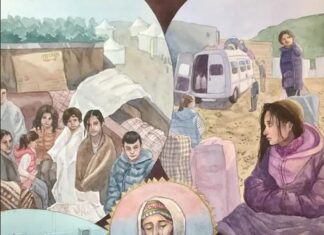MONTREAL — The Lebanese civil war’s aftereffects continue to traumatize people even today. Among other things, the war played an important role in the shaping of the Armenian diaspora. Marlene Edoyan’s documentary film, “The Sea between Us,” portrays aspects of the conflict through two strong-willed women of different backgrounds and poses the question of whether reconciliation is possible.

The Filmmaker
Edoyan served as both director and producer of this film. After a first degree in media studies in Lebanon, she earned bachelor’s degrees from both Notre Dame and Concordia University, in mass communications/media studies and art education respectively. After working on international animated films, Edoyan began making documentaries for film, television and festivals. She founded Fauve Film in 2012 in Montreal as a production company for “author-driven social and political projects that have a unique vision,” and explore “stories of lesser-known communities.” Her first full-length documentary, “Figure of Armen” (2012), focused on the daily lives and struggles of Armenians after independence.
Edoyan has a deep personal connection to Lebanon. Her grandparents were survivors of the Armenian Genocide. Edoyan herself was born in the largely Armenian town of Bourdj Hammoud but grew up in a different neighborhood near Antilias, eventually attending the AGBU Tarouhi Hagopian School. She said, “Every generation seems to have some kind of calamity happen to them. For me, it was the Lebanese war.”

During the war, her parents moved their family to California, but eventually moved back, so Edoyan experienced the turmoil of the 1980s and 1990s in Lebanon. She said, “I was more aware of it toward the end, and I was older. It was atrocious and it scarred me for life.” Her family moved afterwards to Canada when she was around 18 or 20 years old, and she has been living and working there ever since.
She always kept her ties with friends and family remaining in Lebanon, going back every few years. During this period, she said, “I was evolving as a person, and the way I saw Beirut and society there was changing.” Slowly but surely the city was building up again and from the post war years to the early 2000s, it seemed as if it was going through a new renaissance.











